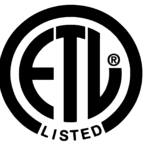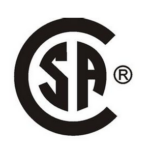If you are producing a product, then you are likely aware that there may be certain safety and quality criteria it needs to meet in order to successfully be marketed and sold. In order to officially prove that your product meets the applicable requirements, you will need to submit it to a third party testing lab to gain product certifications.
Essentially, product certifications ensure that the product meets or exceeds standards for various performance tests and quality checks before it enters the mass market. In some cases certain certifications may be legally required, in other cases it just looks better for your brand from a PR standpoint. In any case, this type of governance is in place to keep us safer, to better industries, and to protect the environment as a whole.
Not every product will require a certification mark. It is dependent on the product market, the end use of the product, and any elements the product might be exposed to such as extreme temperatures, fire, etc. The requirements may also vary from state to state, country to country, and so on. Some standards are more focused on safety, others are angled to assure function and durability. For example, since we do not expect electrical cables or electrically powered equipment to combust or ignite fires, they are required to meet international electric code to help better prevent such situations from happening.
Common Certifications When Manufacturing or Marketing Abroad
There are many different types of certification marks and Nationally Recognized Testing Laboratories (NRTLs), but here are just a few of some of the more widely recognized marks out there.
 UL
UL
UL is a North American product safety certification from Underwriter Laboratories. The mark shows that the product was tested by the global safety science organization and meets safety standards in the U.S. and Canada. It can put your potential clients at ease knowing your product is approved by an organization dedicated to innovative safety solutions and promoting safe living environments. Underwriters Laboratories (UL) has written many of the industry standards we are familiar with today, which is why it has become common to utilize UL for compliance testing. However, there are other options when it comes to selecting a testing partner.
 ETL
ETL
ETL is another NRTL that tests to UL’s written standards. This testing lab began in Thomas Edison’s lighting laboratories and today still conducts electrical performance and reliability tests. The ETL Listed Mark denotes compliance with North American safety and performance standards, as well as that the production facility has been audited and will periodically have follow up inspections to double check continued performance.
CSA
CSA is the Canadian Standards Association Mark. The CSA is an internationally accredited standards development and testing & certification non-profit organization dedicated to advancing safety, sustainability and social good. It’s testing and certification focuses on electrical, mechanical, plumbing, gas, and a variety of other products. It is recognized in the U.S., Canada and other areas around the world.
 CE
CE
The CE Marking acts as a guarantee from the manufacturer that the product meets or exceeds the requirements of European safety, public health and environmental protection laws for the product’s category and application. It is an abbreviation for Conformite Europeenee, which is French for European Conformity. This mark is required if you plan to distribute or sell your product in Europe.
FCC
FCC is a certification from the U.S. Federal Communications Commission. It relates to electromagnetic interference regulation and certifies that electronic products in the U.S. are under approved limits regarding this. It is a requirement that anything that has a radio or connectivity will need to be tested to the appropriate FCC code.
FDA
FDA is the Food and Drug Administration which protects and promotes public health through regulation and supervision of food and drug companies. The FDA approved logo represents a product that has been reviewed by FDA experts for safety and effectiveness. Anything that is consumed or may come in contact with the well-being of its consumers may be regulated by the FDA.
What to Know Before Submitting Your Product for a Certification Mark
Certifications are great and have many benefits, but it’s important to understand that obtaining them is not a walk in the park. First of all, be aware that it can be expensive. There may be a submission fee, annual fee, fluctuating costs depending on how many components and materials are in your product, and more. Similarly, certifying your product makes design changes more difficult since you will either have to limit your modifications to ones already approved by your testing lab, or go through the whole certification process again. For these reasons it’s not a bad idea to look over the standards for your product type before completing your design, and take that into consideration moving forward, instead of waiting and working backwards.
The product certification process also takes time. Be sure to incorporate plenty of time for this in your product timeline. Different testing labs may be able to offer different timelines though, so it may be to your benefit to look into more than one. Once your product has earned a certification mark though, it doesn’t end there. Be prepared for periodic inspections that verify that your product is still maintaining compliance. Also remember that even if your product doesn’t change, standards can which could impact your certification costs.
While this all may seem like a hassle, product certification is intended to be a positive thing. A listed mark will show consumers that your product has officially been tested by an NRTL and currently meets all standards for safety as well as agrees to continued compliance. This can be a huge benefit as you work towards taking your product to market and increasing sales. You want people and organizations to know that your product will deliver exactly what is expected of it.

